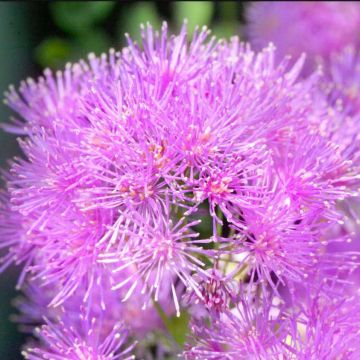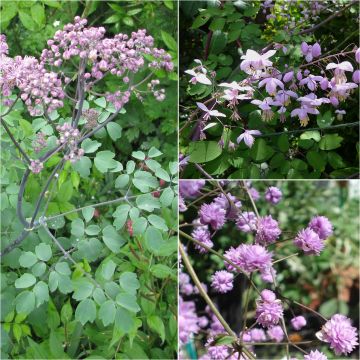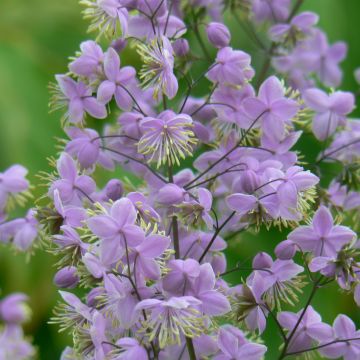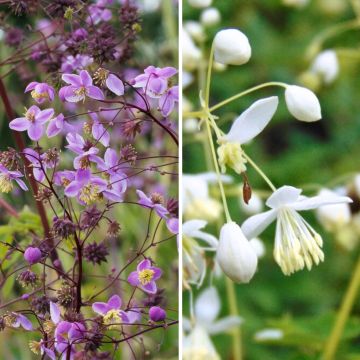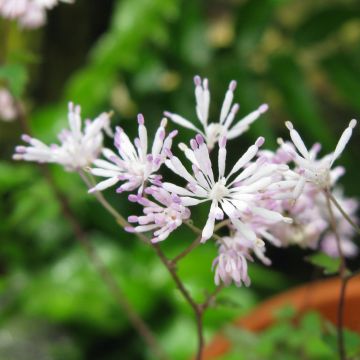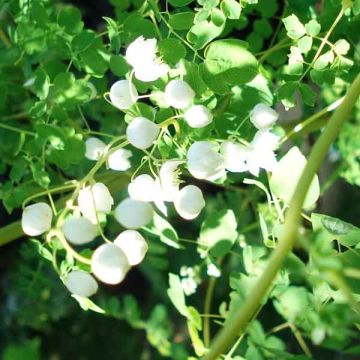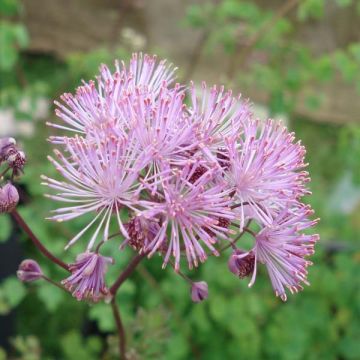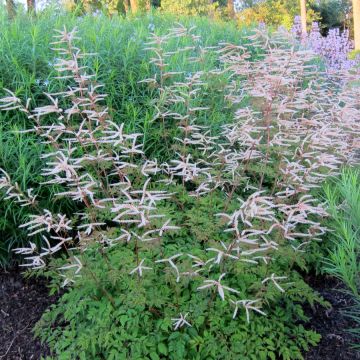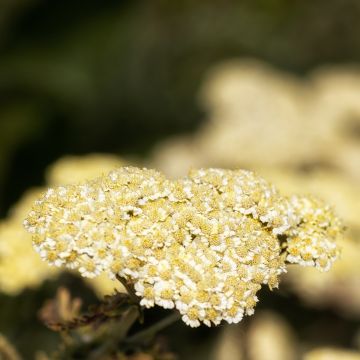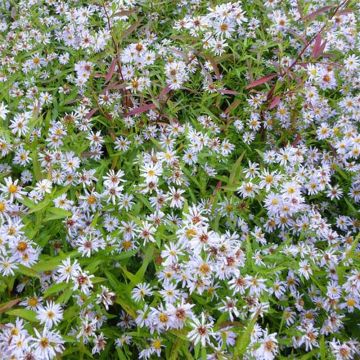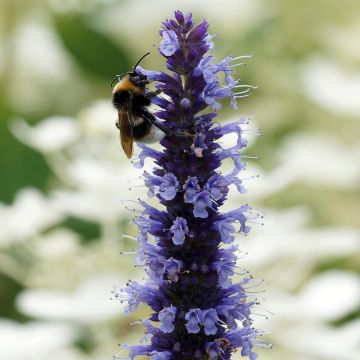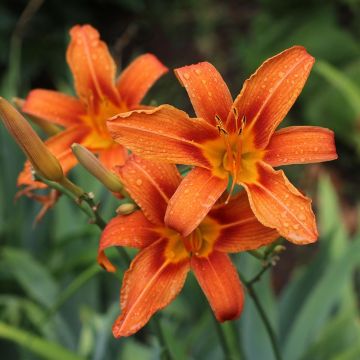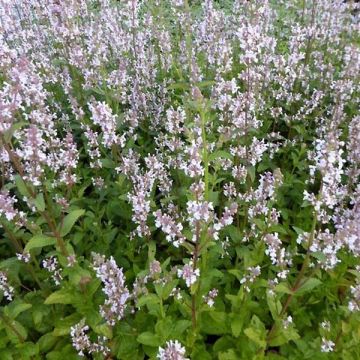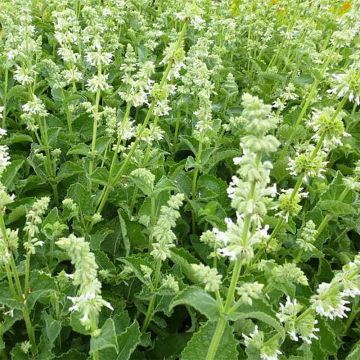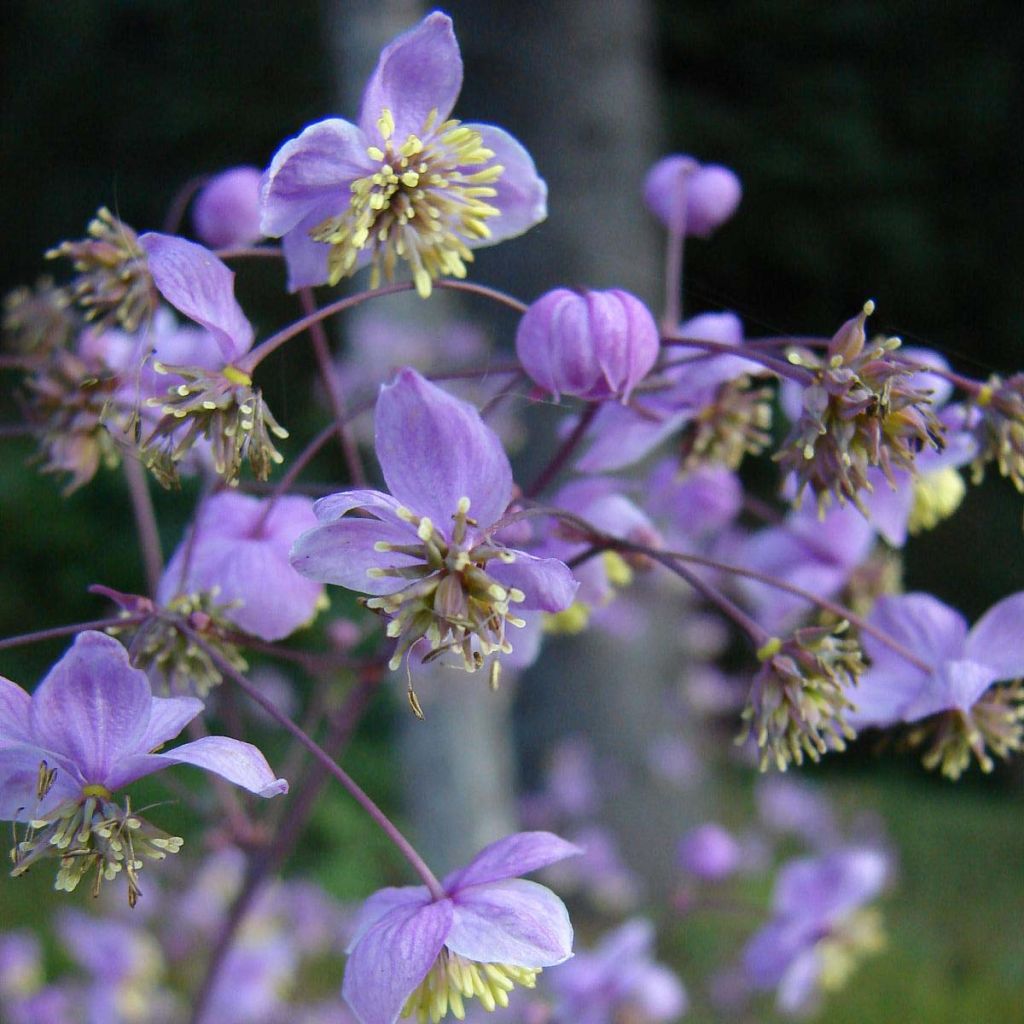

Thalictrum rochebrunianum - Meadow-rue
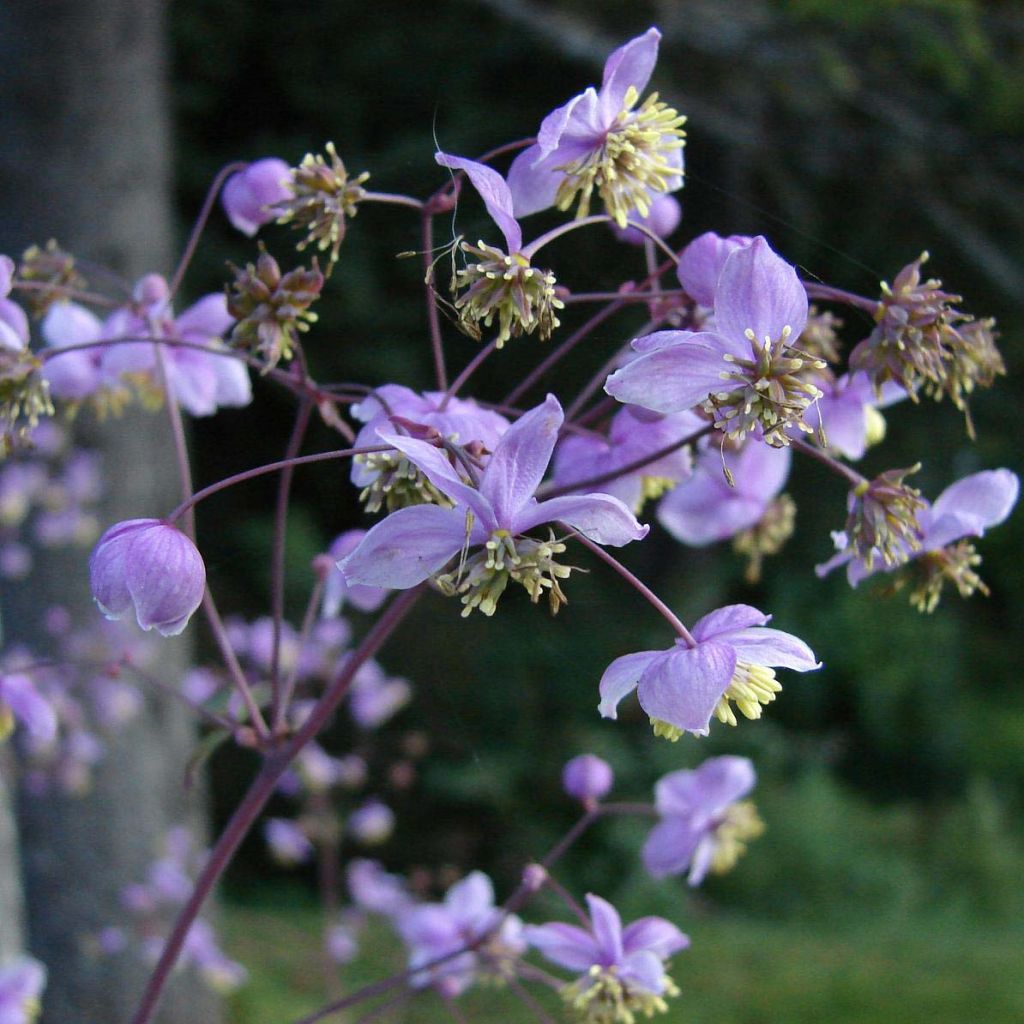

Thalictrum rochebrunianum - Meadow-rue
Thalictrum rochebrunianum - Meadow-rue
Thalictrum rochebrunianum
Meadow Rue
This item cannot be shipped to the selected country
Delivery charge from €5.90
Delivery charge from €5.90
Delivery charge from €5.90
More information
Schedule delivery date,
and select date in basket
This plant carries a 12 months recovery warranty
More information
We guarantee the quality of our plants for a full growing cycle, and will replace at our expense any plant that fails to recover under normal climatic and planting conditions.
From €5.90 for pickup delivery and €6.90 for home delivery
Express home delivery from €8.90.
From €5.90 for pickup delivery and €6.90 for home delivery
Express home delivery from €8.90.
From €5.90 for pickup delivery and €6.90 for home delivery
Express home delivery from €8.90.

Does this plant fit my garden?
Set up your Plantfit profile →
Description
Thalictrum rochebrunianum is an astonishing Japanese meadow rue, a tall plant but full of class. This very beautiful botanical species is as much admired for its particularly elegant, fine and finely cut bluish foliage as for its summer flowering formed of countless small, pink-purple cup-shaped flowers, with yellow-cream stamens. They are gathered in aerial, pendulous panicles, blooming at the end of tall, solid and straight stems. This wonderful perennial thrives in rather moist soil, in shade or semi-shade, away from direct sunlight that could scorch its foliage.
Thalictrum rochebrunianum, also known as lavender mist meadow rue, is a rhizomatous perennial plant native to Korea and Japan, belonging to the buttercup family. It is a herbaceous perennial, with an upright and erect habit, forming a bushy clump, from which thin and solid stems rise, tinged with purple, reaching a height of about 1.50 m (5ft), sometimes 2 metres (7 feet), in moist soil and in the sun), with a width of 40 to 50 cm (16 to 20in). Its deciduous foliage, slightly bluish-green, finely cut and very light, is composed of leaves 25 to 45 cm (10 to 18in) long, pinnate or ternate, with entire or lobed obovate leaflets. In July-August, large loose panicles appear, which are well-branched with small cup-shaped flowers; four blue-purple sepals, enhanced by prominent yellow creamy stamens. Not liking competition of nearby roots, a planting distance of 40 cm (16in) around its base should be allowed. Meadow rue is rather slow to establish, but it will become more and more beautiful over time.
This Thalictrum rochebrunianum has the same ornamental function as paniculate Gypsophilas, but unlike them, it chooses damp and shaded areas of the garden. With its development, delicate and elegant foliage, as well as its ethereal appearance, it will be perfect to give height and lightness to flowerbeds. Despite its size, its transparent silhouette allows it to also be planted at the front of flowerbeds. It will be very effective in contrast with less delicate perennials (Rodgersia, blue Hostas), as well as at the edge of shrub flowerbeds. It will naturally find its place in the company of Hydrangeas, shrub or climbing Roses, Fuchsias, Japanese Anemones, Aconites, Astilbes, Campanulas, Buckthorn, Snowberries, Ferns, Hellebores, Foxgloves, Grasses, perennial Geraniums, Elderberries, Sacred Bamboo, etc.
Report an error about the product description
Thalictrum rochebrunianum - Meadow-rue in pictures
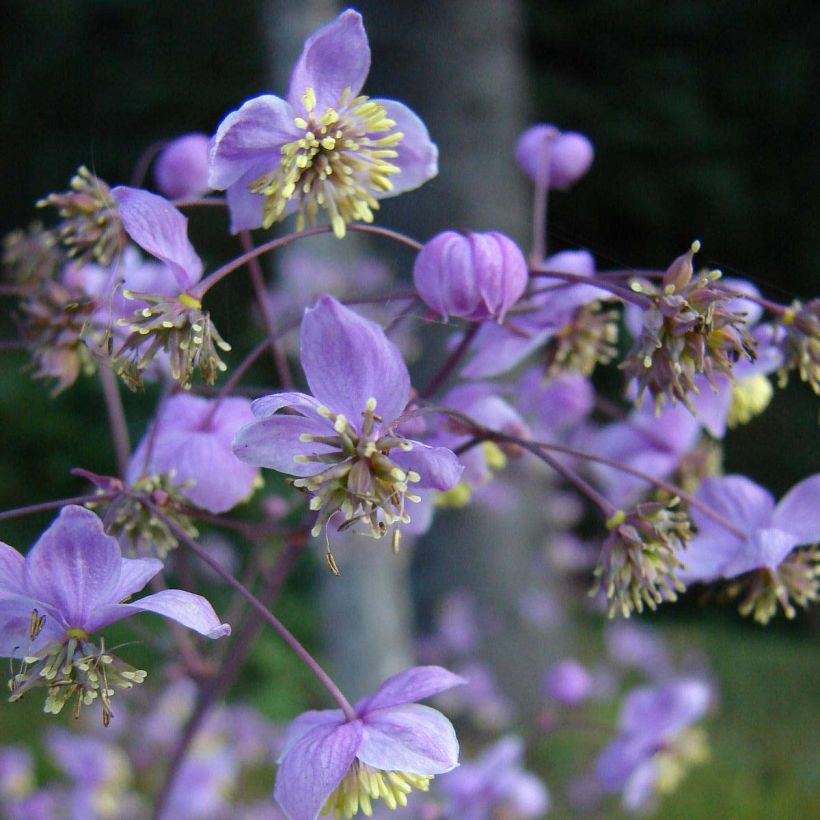

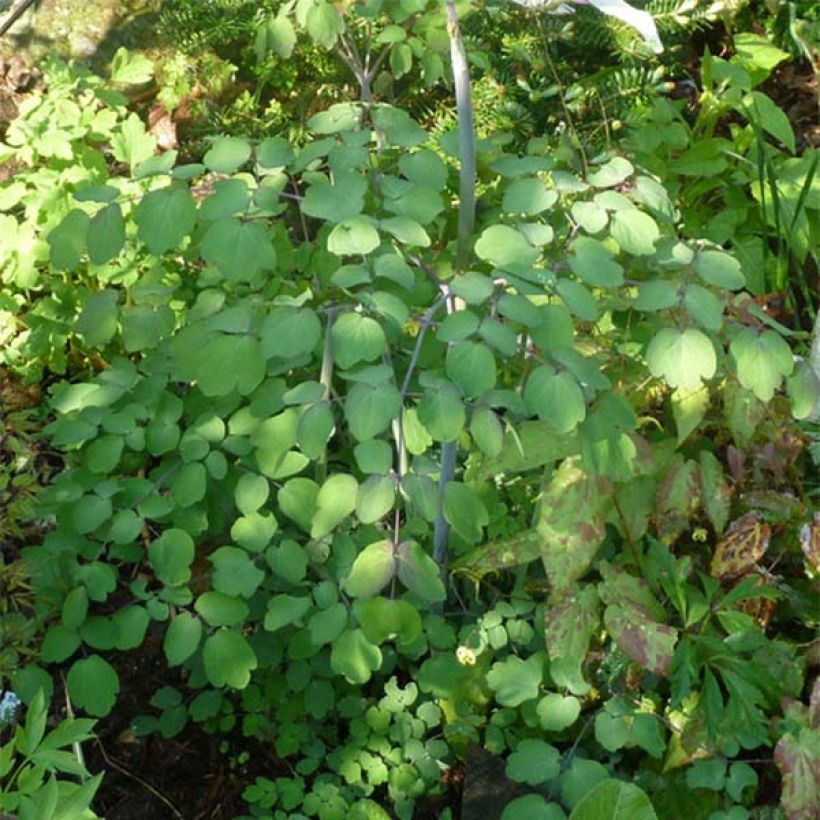

Flowering
Foliage
Plant habit
Botanical data
Thalictrum
rochebrunianum
Ranunculaceae
Meadow Rue
Southeast Asia
Other Thalictrum - Meadow Rue
Planting and care
Despite its delicate and fragile appearance, Thalictrum rochebrunianum is a hardy and low-maintenance perennial. It simply needs to be planted in partial shade or even in shade, in a moist and well-drained soil, rich in organic matter and with little limestone. It can also be established in full sun, as long as the soil remains moist and there is ambient humidity around the plant. Planting can be done in spring or autumn. Planting it at the base of a north or east-facing wall would be ideal. It is advisable to amend the soil with compost each year to improve winter drainage and facilitate root development. Regular watering is also necessary during dry and hot periods. Regularly deadhead the flowers to prolong the flowering period. Losing its leaves in autumn and disappearing completely in winter, it will only reappear in spring quite late. Therefore, it is recommended not to cut the plant to the ground in autumn, so as not to forget its location the following spring. It is a bit slow to establish, but it will delight the gardener over the years! Due to its large size, staking may be necessary, especially if this Meadow Rue is planted as a specimen or in a windy location. To avoid this inconvenience, it is advisable to plant it in the middle of other plants and bushes for support. Dividing the clumps can be carried out in March-April by cutting the clump into several pieces with a spade, but it takes a long time for the divisions to establish. Although highly resistant to diseases, it may be susceptible to powdery mildew during droughts and slug attacks at the start of the growing season.
Planting period
Intended location
Care
-
, onOrder confirmed
Reply from on Promesse de fleurs
Summer flowering perennials
Haven't found what you were looking for?
Hardiness is the lowest winter temperature a plant can endure without suffering serious damage or even dying. However, hardiness is affected by location (a sheltered area, such as a patio), protection (winter cover) and soil type (hardiness is improved by well-drained soil).

Photo Sharing Terms & Conditions
In order to encourage gardeners to interact and share their experiences, Promesse de fleurs offers various media enabling content to be uploaded onto its Site - in particular via the ‘Photo sharing’ module.
The User agrees to refrain from:
- Posting any content that is illegal, prejudicial, insulting, racist, inciteful to hatred, revisionist, contrary to public decency, that infringes on privacy or on the privacy rights of third parties, in particular the publicity rights of persons and goods, intellectual property rights, or the right to privacy.
- Submitting content on behalf of a third party;
- Impersonate the identity of a third party and/or publish any personal information about a third party;
In general, the User undertakes to refrain from any unethical behaviour.
All Content (in particular text, comments, files, images, photos, videos, creative works, etc.), which may be subject to property or intellectual property rights, image or other private rights, shall remain the property of the User, subject to the limited rights granted by the terms of the licence granted by Promesse de fleurs as stated below. Users are at liberty to publish or not to publish such Content on the Site, notably via the ‘Photo Sharing’ facility, and accept that this Content shall be made public and freely accessible, notably on the Internet.
Users further acknowledge, undertake to have ,and guarantee that they hold all necessary rights and permissions to publish such material on the Site, in particular with regard to the legislation in force pertaining to any privacy, property, intellectual property, image, or contractual rights, or rights of any other nature. By publishing such Content on the Site, Users acknowledge accepting full liability as publishers of the Content within the meaning of the law, and grant Promesse de fleurs, free of charge, an inclusive, worldwide licence for the said Content for the entire duration of its publication, including all reproduction, representation, up/downloading, displaying, performing, transmission, and storage rights.
Users also grant permission for their name to be linked to the Content and accept that this link may not always be made available.
By engaging in posting material, Users consent to their Content becoming automatically accessible on the Internet, in particular on other sites and/or blogs and/or web pages of the Promesse de fleurs site, including in particular social pages and the Promesse de fleurs catalogue.
Users may secure the removal of entrusted content free of charge by issuing a simple request via our contact form.
The flowering period indicated on our website applies to countries and regions located in USDA zone 8 (France, the United Kingdom, Ireland, the Netherlands, etc.)
It will vary according to where you live:
- In zones 9 to 10 (Italy, Spain, Greece, etc.), flowering will occur about 2 to 4 weeks earlier.
- In zones 6 to 7 (Germany, Poland, Slovenia, and lower mountainous regions), flowering will be delayed by 2 to 3 weeks.
- In zone 5 (Central Europe, Scandinavia), blooming will be delayed by 3 to 5 weeks.
In temperate climates, pruning of spring-flowering shrubs (forsythia, spireas, etc.) should be done just after flowering.
Pruning of summer-flowering shrubs (Indian Lilac, Perovskia, etc.) can be done in winter or spring.
In cold regions as well as with frost-sensitive plants, avoid pruning too early when severe frosts may still occur.
The planting period indicated on our website applies to countries and regions located in USDA zone 8 (France, United Kingdom, Ireland, Netherlands).
It will vary according to where you live:
- In Mediterranean zones (Marseille, Madrid, Milan, etc.), autumn and winter are the best planting periods.
- In continental zones (Strasbourg, Munich, Vienna, etc.), delay planting by 2 to 3 weeks in spring and bring it forward by 2 to 4 weeks in autumn.
- In mountainous regions (the Alps, Pyrenees, Carpathians, etc.), it is best to plant in late spring (May-June) or late summer (August-September).
The harvesting period indicated on our website applies to countries and regions in USDA zone 8 (France, England, Ireland, the Netherlands).
In colder areas (Scandinavia, Poland, Austria...) fruit and vegetable harvests are likely to be delayed by 3-4 weeks.
In warmer areas (Italy, Spain, Greece, etc.), harvesting will probably take place earlier, depending on weather conditions.
The sowing periods indicated on our website apply to countries and regions within USDA Zone 8 (France, UK, Ireland, Netherlands).
In colder areas (Scandinavia, Poland, Austria...), delay any outdoor sowing by 3-4 weeks, or sow under glass.
In warmer climes (Italy, Spain, Greece, etc.), bring outdoor sowing forward by a few weeks.


































